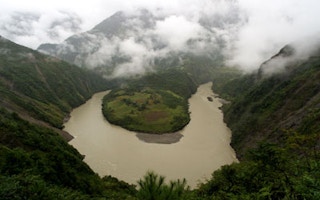One month after the Chinese government lifted its ban on dams on the upper Salween River (known as the Nu in China), the Burmese government confirmed that it too will allow the construction of Chinese-backed hydropower projects along the lower Salween.
In late February, the deputy minister for electric power told parliament that six dams would be built on the Salween to generate electricity, referring to the Kunlong, Tasang, Hat Gyi, Nong Pa (Naungpha), Mantawng and Ywathit dams. While the Myanmar government has yet to reveal the companies involved in the projects, it is no secret that among them are dam-building giants Sinohydro, China Three Gorges Project Corp., China Southern Power Grid.
In 2010, the Myanmar government signed memorandums of understanding for these hydropower projects, paving the way for various Chinese-Thai-Burmese joint ventures to develop them. According to those agreements, most of the generated power will to go to Thailand or China.
As in the case of the Myitsone dam – a controversial Chinese-funded project on the Irrawaddy River suddenly suspended in 2011 – the proposed Salween schemes highlight the challenges facing Chinese dam developers overseas and their international responsibilities.
In an interview with Chinese state-owned newspaper Global Times, a spokesperson for China’s embassy in Myanmar noted that, since the Myitsone dam suspension, it had been “the toughest time for Chinese investment in Myanmar”, with some projects mired in controversy and no new investments coming from China.
In response, China Power Investment, the company behind the Myitsone project, has invested significant resources in trying to change Burmese perceptions of the dam – by hosting Burmese media in China, increasing media access to company executives to make their case and leafleting local communities.
It seems that China Power Investment is not the only dam builder learning from Myitsone. Earlier this year, Sinohydro hastily set up over 20 regional new bureaus around the world to focus on communicating the company’s brand and project activities more effectively. But International Rivers has seen little evidence of real change in the way Chinese dam builders go about their projects overseas.
Click here to read the full story.










